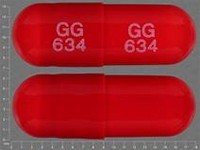Amantadine hydrochloride
CLINICAL USE
DOSE IN NORMAL RENAL FUNCTION
twice a day
once a day
PHARMACOKINETICS
187.7
67
90
5–10
15/500
DOSE IN RENAL IMPAIRMENT
GFR (mL/MIN)
35–50 100 mg every 24 hours
15–35 100 mg every 48–72 hours
<15
100 mg every 7 days
DOSE IN PATIENTS UNDERGOING RENAL REPLACEMENT THERAPIES
Not dialysed. Dose as in
GFR <10 mL/min
Not dialysed. Dose as in
GFR <10 mL/min
Unknown dialysability. Dose as in
GFR<15 mL/min
Unknown dialysability. Dose as in
GFR=15–35 mL/min
IMPORTANT DRUG INTERACTIONS
Potentially hazardous interactions with other drugs
amantadine possibly enhanced
ADMINISTRATION
Reconstition
–
Route
Oral
Rate of Administration
–
Comments
–
OTHER INFORMATION
the drug is prescribed for those with
congestive heart failure
treatment and disappear 24–48 hours after
discontinuation of the drug
dose is removed by a 4 hour haemodialysis
session
in elimination half-life
